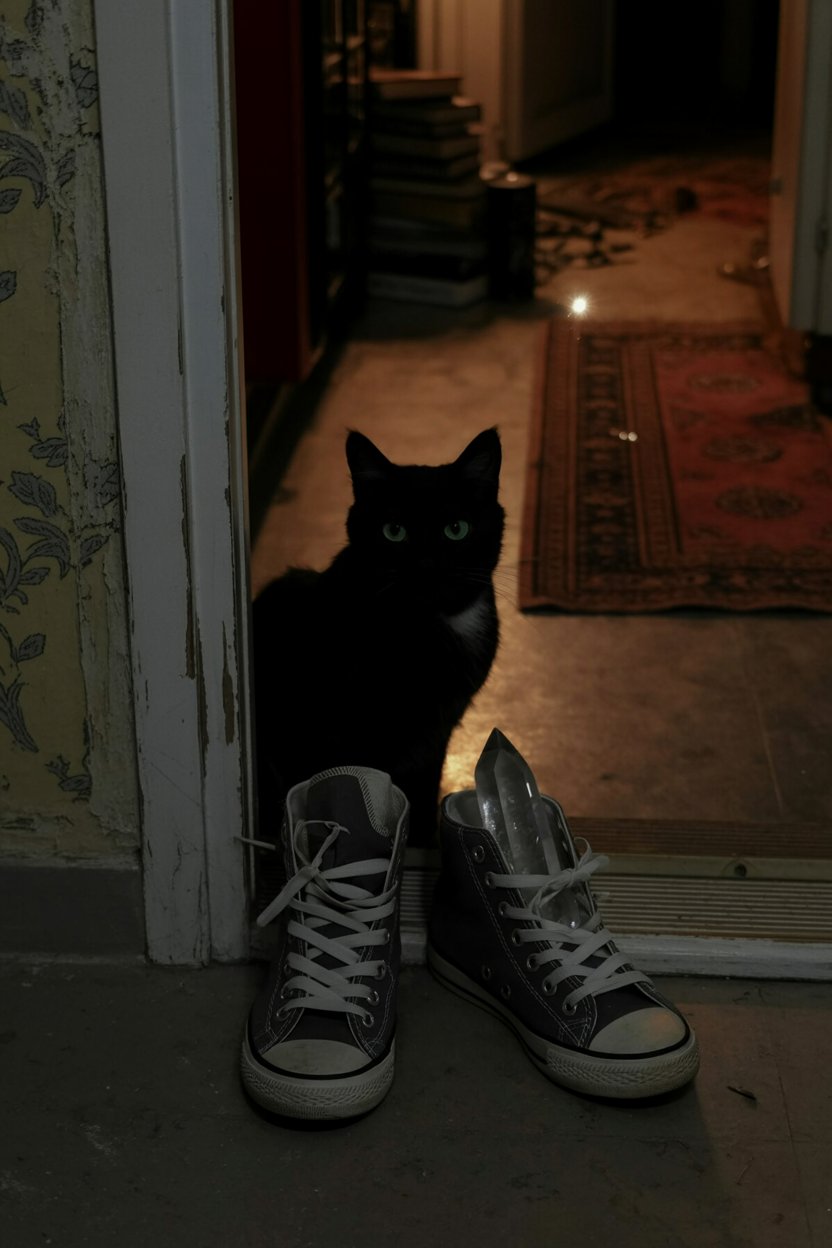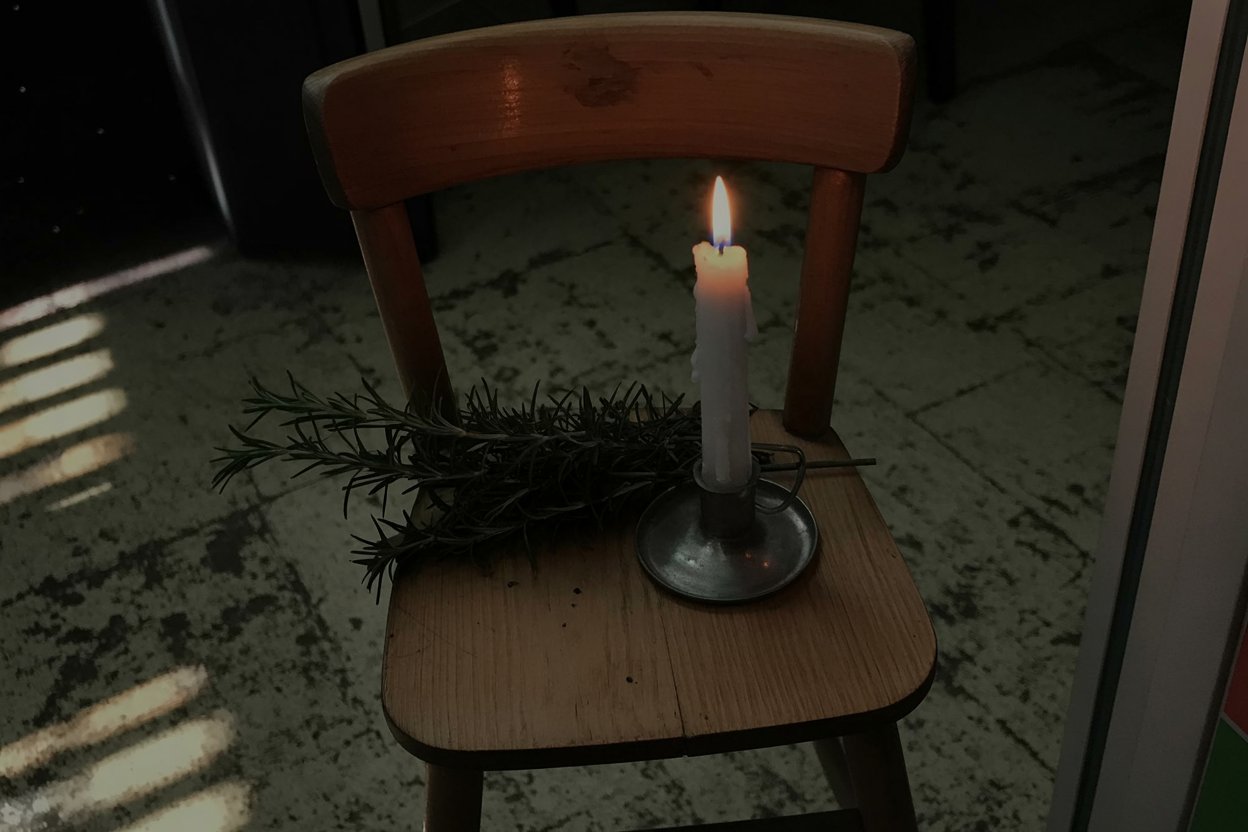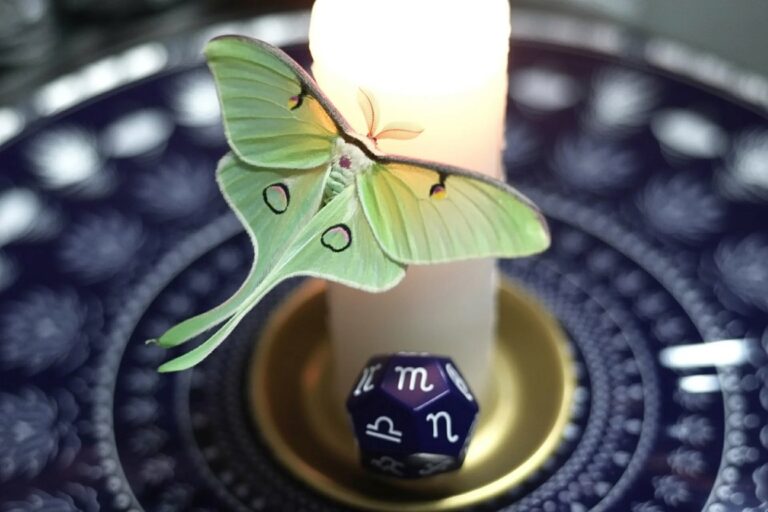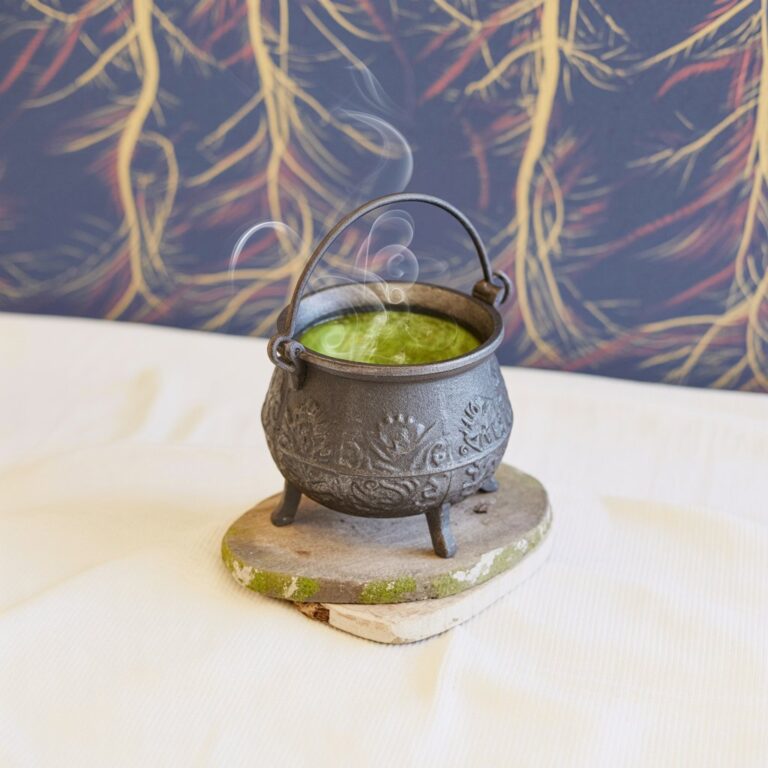Do Witches Exist? Are Witches Real?
Please note that posts on this site may contain affiliate links
Yes. Witches exist as real people with real lives, real communities, and real practices. The data proves it.
Witchcraft practitioners in the United States grew by 143% between 1990 and 2001, and that growth has only accelerated. Current estimates place the witch population at around one million people in the US alone, comparable to major religious denominations like Seventh-Day Adventists. Recent surveys show 64% of Americans identify as spiritual, with rapidly growing numbers choosing non-religious spiritual paths like witchcraft.
The internet makes witchcraft more visible than ever. Witches share their practices openly on TikTok, write about their craft in major publications, and build thriving communities online. But visibility doesn’t equal novelty. Witches have always existed, working quietly in the margins, healing with herbs, reading patterns in nature, and practicing magic long before Christianity arrived to call it heresy.
And yes, magic works. Just probably not the way you think.
Who Counts as a Witch?
A witch is anyone who identifies as a witch.
That’s the most accurate definition you’ll get, even if it sounds frustratingly simple. There’s no witch licensing board, no central authority handing out certificates of authenticity. Self-identification is how it works. If you call yourself a witch and practice witchcraft, you’re a witch.
What does practicing witchcraft actually mean? That varies wildly. Some witches work in covens with strict ritual structures. Others practice alone, making it up as they go. Some follow eclectic paths that pull from multiple traditions. Others stick to one cultural or magical system.
But there are common threads:
- Working with correspondences (herbs, crystals, colors, planetary timing)
- Using ritual and intention to create change
- Recognizing patterns and symbolic connections
- Timing work with natural cycles (moon phases, seasons, planetary hours)
- Building relationships with spiritual forces (deities, ancestors, spirits, or just nature itself)
These aren’t arbitrary associations. Correspondences work as real associative networks in consciousness. When you light a green candle for abundance while focusing your intention, you’re activating cognitive patterns that connect “green” with “growth” with “money” with “increase.” Your brain recognizes these patterns. They create real psychological and body-based effects.
Modern witches range from hedge witches who commune with spirits to eclectic practitioners who blend traditions to secular witches who treat magic as pure psychology. The diversity is enormous. What unifies them is working with signs, symbols, and correspondences to shift reality through focused intention.

How Many Witches Are There?
Look at these numbers. Just look at them.
Growth in the United States:
| Time Period | Growth Rate | Estimated Population |
|---|---|---|
| 1990-2001 | 143% increase | 134,000 → 340,000 |
| 2001-2016 | Continued acceleration | ~1 million |
| 2020-Present | Explosive growth | 1+ million (conservative) |
That 143% growth rate between 1990 and 2001 came from the Graduate Center of the City University of New York. By 2016, journalist and author Alex Mar estimated at least one million practicing witches in the US, putting the witch population on par with major religious groups.
The growth hasn’t stopped. Pew Research found that 64% of Americans now identify as spiritual, with particular growth among those who describe themselves as “spiritual but not religious.” Witchcraft fits perfectly into that category.
Why the explosive growth? Several factors converge:
- Declining institutional religion. When traditional churches fail to serve people’s spiritual needs, many turn elsewhere.
- Internet community. Witches connect online, sharing knowledge that was once passed only through covens or books.
- Feminist reclamation. Witchcraft offers spiritual autonomy and power outside patriarchal religious structures.
- Environmental crisis. Earth-centered spirituality resonates when the planet is burning.
- Need for control. In an age of pandemic, climate disaster, and political chaos, witchcraft promises some influence over forces that feel overwhelming.
This is a global phenomenon. While US data is most comprehensive, contemporary witchcraft communities thrive worldwide, from Europe to Australia to South America.
You’re probably walking past witches every day. We’re teachers, nurses, software engineers, parents at the PTA meeting. We look like everyone else because we are everyone else, just with altars at home and moon phase apps on our phones.
Witches Have Always Existed
The word “witch” carries medieval baggage, but the practices run deeper than Christianity’s attempts to eradicate them.
Before the witch hunts, before the Inquisition, before organized religion tried to monopolize spiritual authority, there were people who worked with herbs, read omens, performed rituals, and mediated between the material and spiritual worlds. Every culture had them:
- Cunning folk in England who healed with herbs and broke curses
- Völvas in Norse culture who practiced seiðr and divination
- Curanderas in Latin America blending indigenous and Catholic practices
- Root workers in the American South carrying African magical traditions
- Wise women across Europe who served as midwives and healers
The historical witch hunts (peak years: 1580-1630 in Europe) killed between 40,000 and 60,000 people, mostly women. Irony: most victims probably weren’t practicing witches at all. They were scapegoats, victims of property disputes, women who were too old or too outspoken or too poor.
But actual witches existed before the hunts and continued after. Folk magic practices survived in Appalachia, in Italian and Greek immigrant communities, in African American hoodoo traditions, in family lineages passed down quietly through generations.
Modern witchcraft draws from multiple sources:
- Folk traditions: Herbal healing, folk magic correspondences, seasonal celebrations
- Grimoire magic: Medieval and Renaissance texts like the Key of Solomon
- Indigenous practices: Though ethical practitioners are careful about appropriation versus exchange
- Contemporary synthesis: New techniques, psychological frameworks, feminist reclamation
The doctrine of signatures (the idea that a plant’s appearance indicates its use) was proto-pattern recognition. Healers observed that plants with heart-shaped leaves often affected circulation, that yellow flowers treated jaundice. They were wrong about mechanism but right about effect often enough that the knowledge survived.
We don’t claim unbroken lineage from ancient priestesses. That’s romanticized nonsense.
But we do inherit real techniques, real observations about how plants and timing and ritual structure work. These pattern-recognition techniques (correspondences, symbolic associations, ritual structures) survive because they actually work with how your brain processes information. They map onto how human consciousness functions.

Witch Persecution Continues Globally
When people dismiss witchcraft as fantasy, they’re ignoring the bodies.
The persecution continues right now. Today.
Current global persecution data:
- Ghana: Over 500 people, primarily elderly women, currently live in camps after being accused of witchcraft and driven from their communities. They survive in rudimentary conditions with little access to healthcare or food. Amnesty International documented systematic human rights violations against accused witches in 2025.
- Tanzania: Up to 20,000 people have been murdered for alleged witchcraft, with elderly women the primary targets.
- Papua New Guinea: Sorcery accusation-related violence remains endemic, with the government launching initiatives in 2025 to address the crisis.
- Kenya, Gambia, Malawi: Witch hunts continue, targeting vulnerable populations.
The UN Human Rights Council released a comprehensive report in 2023 documenting violations and abuses rooted in witchcraft accusations. The International Network Against Witchcraft Accusations (INAWARA) tracks data globally, showing this is not isolated or historical.
Even in the United States, witches face employment discrimination, custody battles where their religion is used against them, and social stigma. Many practice “in the broom closet,” hiding their identity from family, employers, and communities. I know witches who keep a separate social media presence under their legal name, never mentioning their practice. One wrong photo, one slip, and suddenly you’re explaining yourself in a custody hearing.
When you claim witches don’t exist, you erase the people dying because someone accused them of witchcraft. You ignore the practitioners who risk their safety by being visible. You dismiss real people with real lives and real communities.
Society doesn’t systematically murder imaginary people. Violence requires bodies.

How Magic Actually Works
Here’s where it gets interesting and where most people check out. Stay with me.
Magic works through observable mechanisms: neurological, psychological, and body-based processes that create measurable effects. You won’t see sparkles. You won’t throw fireballs. But the changes are real.
The Mechanisms Are Real
Neurological changes:
Ritual induces altered states of consciousness. When you perform repetitive actions (chanting, drumming, focused breathing), your brain waves shift. This is documented. Trance states show distinct patterns in brain imaging studies.
These altered states increase suggestibility, enhance pattern recognition, and create conditions where symbolic associations feel more real. The ritual structure itself triggers neurological responses.
Psychological shifts:
Intention-focused practice creates behavioral change. When you perform a spell for confidence, you’re programming your subconscious. The ritual actions become anchors. Your brain learns “green candle plus this incense plus this intention equals I feel more confident.”
The placebo effect is a real effect. Belief shapes experience measurably. When you believe your protection spell works, you walk differently. You make different choices. Those choices create different outcomes.
Body-based responses:
Your body keeps score. Ritual creates physiological shifts: heart rate changes, hormone releases, nervous system regulation. When you cast a circle and call quarters, you’re creating a container that your nervous system recognizes as “safe space for this work.”
Pattern recognition networks:
Correspondences activate real cognitive associations. Your brain is a pattern-matching machine. When you work with the correspondence “rose equals love,” you’re tapping into cultural conditioning, personal memory, and sensory association. Roses at weddings. Valentine’s Day. First dates. Your grandmother’s perfume. The weight of a bouquet in your hands. The way petals feel between your fingers.
These networks exist whether you acknowledge them or not. Magic makes them intentional tools.
Synchronicity:
This is what Jung meant by meaningful coincidence as a real phenomenon. Events connect through meaning rather than normal cause-and-effect. When you do a spell and the right person calls, the right opportunity appears, the right information surfaces at the right time, you’re experiencing connections that don’t work through ordinary causation.
Is it magic making it happen or are you just noticing patterns you’d miss otherwise? Maybe both. Does it matter? The effect is the same: your spell worked.
What It Looks Like In Practice
Magic is subtle. You won’t throw fireballs. You might:
- Feel more confident after a glamour spell, leading to better job interview performance
- Notice synchronicities after a manifestation ritual (the right opportunity appearing at the right time)
- Experience emotional release during shadow work with corresponding physical symptoms lessening
- Develop stronger intuition after regular divination practice
- Build healthier boundaries after protection work
The changes are real. They’re measurable in your behavior, your choices, your nervous system responses, your life outcomes. Magic works with internal forces (consciousness, intention, subconscious programming) and external systems (timing, correspondences, ritual structure) to create change that feels magical because it works.
This is how practicing witches describe their craft when you ask them honestly.

What Witchcraft Looks Like in Practice
Let’s get specific. What does a witch’s life actually look like?
Morning ritual might include:
- Stirring coffee clockwise while setting intentions for the day (or counterclockwise if you spilled it and need to banish this whole morning)
- Drawing a daily tarot card
- Checking moon phases and planetary hours for timing
- Quick grounding meditation
- Lighting a candle on the altar
Ongoing practices:
- Keeping a grimoire or book of shadows
- Tracking moon cycles and planning spells accordingly
- Growing herbs for magic and cooking (if you have the space, the light, and the ability to keep plants alive)
- Maintaining an altar space
- Regular divination (tarot, runes, pendulum)
- Shadow work through journaling
- Seasonal sabbat celebrations
When a spell is needed:
- Research correspondences
- Gather materials (candles, herbs, crystals)
- Choose timing (moon phase, planetary day/hour)
- Set up sacred space
- Perform the working
- Ground and close
- Record results
None of this requires elaborate tools or expensive supplies. A cardboard box can be an altar. Grocery store herbs work for spells. Dollar store candles burn just as well as the fancy ones. You can practice witchcraft in a studio apartment with a candle and intention.
The community matters too. Witches connect online, share techniques, offer support. The internet transformed solitary practice from isolated to networked. You can find teachers, join virtual covens, learn from practitioners worldwide.
But plenty of witches never join a community. Solitary practice is completely valid. The work is personal. The results are personal. You don’t need anyone’s permission or validation to be a witch except your own.
You Don’t Have to Believe (But You Should Acknowledge)
Here’s the thing: you don’t need to believe magic works.
You can think it’s psychological placebo effects all the way down. You can chalk it up to confirmation bias and selective memory. You can remain completely skeptical about the mechanisms.
But you do need to acknowledge that witches exist as real people with real practices and real communities.
The demographic data is clear. The persecution is documented. The practitioners are visible and vocal. Modern witches walk among you, and they’re not going anywhere.
Skepticism about magical efficacy is fine. Dismissal of practitioners as deluded or pretending crosses a line. When you mock or minimize witchcraft, you’re dismissing real people whose spiritual practice is as valid as any religion.
And if you’re curious? If something in this post resonated? The door is open. Witchcraft is accessible. You don’t need special gifts or family lineage. You need curiosity, intention, and willingness to experiment.
Start small. Light a candle with intention. Track the moon for a month. Try a simple protection spell. See what happens. The practice will teach you more than any book or article can.
We’ve always been here. And we’re not going anywhere.







